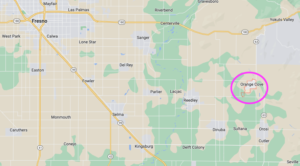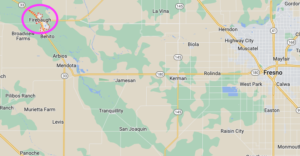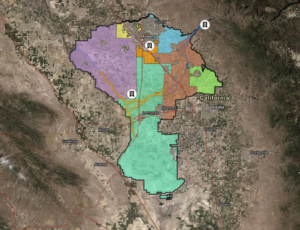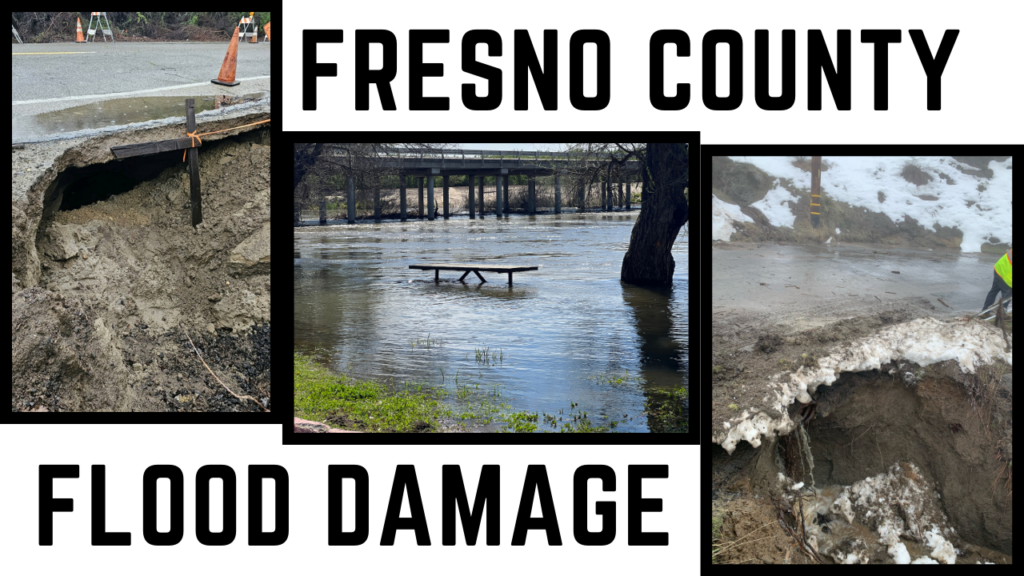Agencies in Fresno County, from small cities to irrigation districts, are hoping money from the Federal Emergency Management Agency arrives in time to help them fix damage from last winter’s battering storms as they scramble to get ready for another looming wet winter.
Fresno County was slammed hard by storms in January and March. While some repairs are almost finished, local governments and other agencies are still waiting to hear the outcome of applications they sent FEMA for tens of millions of dollars in reimbursements.
The total, so far, across Fresno County agencies is nearly $40 million. There is no word on when FEMA may start cutting checks.
Meanwhile, agencies throughout the valley are still assessing damages and sending updated numbers to FEMA.
Still recovering
“We’re still in recovery,” said Michelle Avalos, public information officer for the Fresno County Department of Public Works and Planning. “We do have some of the damages identified, but we only know up to a certain extent.”
The storms washed away entire embankments, flooded parks and damaged bridges, she said.
Of Fresno’s total FEMA requests, the county has the single largest chunk with submitted applications totalling almost $23 million. But staffers are still assessing damages so that number could go up.
The damages were much worse for the second storm in March, said Avalos. The number of recovery projects doubled compared to the first storm in January.
Much of the recovery has consisted of debris removal from downed trees, mudslides and washouts, said Avalos. In the mountains, the county had to helicopter in medication where roads had washed out and stranded some residents.
“Storm one and storm two happened so closely together that we didn’t even get a chance to try to recover,” said Avalos.
Buying water in a flood
The City of Orange Cove, on the southeastern edge of Fresno County, suffered direct hits to its drinking water system during the storms. And without significant funding, it will likely happen again.
The gush of water from rains and flood releases from Millerton Lake, inundated Orange Cove’s drinking water treatment plant, said Joe Estrada, assistant public works director for Orange Cove.

Sediment in the water clogged the city’s treatment filters. In an ironic turn of events, the city had to buy water from the Bureau of Reclamation to flush the filters and get them working properly.
“We used more than our average monthly allocation of water by at least anywhere from five to 10 acre feet,” said Estrada. “And that’s a lot of water.”
Normally, the filters are flushed every 30 hours with about 80,000 gallons of treated water, Estrada said. After the storms, the city had to flush them every five hours.
Those filters are designed to last 10-12 years but the excessive use forced them to be replaced immediately at a cost of $500,000, according to Estrada.
That’s come out of the city’s own funds so far and almost all the work on repairing the system is complete. Estrada is hoping FEMA will reimburse the city so it can get back to its pre-disaster finances.
“We’re a low income community. So we don’t have the finances and the money sitting in our reserves just to come up and replace things as needed,” said Estrada. “So when this impact hit us, it hit us really hard.”
And unless significant changes are made to the system, all of this could happen again, said Estrada.
Staff has also submitted an application to FEMA for about $1.8 million to build a flow system to protect the treatment facilities in another storm. Estrada said the project would remove sediment and debris prior to reaching the drinking water system.
But it’s a large project and would take at least a year to start construction. If FEMA doesn’t fund it, the city won’t be able to afford to build it, said Estrada.
“We’re a little worried right now,” said Estrada. “There’s a lot of talk and prediction stating that this winter coming up is going to be another wet one.”
Getting the runaround
The Firebaugh Canal Water District, based in Mendota, hopes to fix one of its canals where floodwater rushed in and separated the cement-lined canal from the banks, cracking the canal, said Madison Medeiros, administrative assistant at the district.
The district applied for about $1 million to cover repairs. The canal can’t be repaired until the fall when water deliveries to farmers ramp down, said Medeiros.

But the application process with FEMA, apparently, has been caught in a paperwork snafu.
In August, Medeiros was notified via email that the district wasn’t eligible for any funding because the damage was done during the first storm and the application was listed under the second storm.
This comes after a FEMA inspection and multiple communications with FEMA and state staff, said Medeiros.
“Then all of a sudden, ‘Oh, actually you don’t qualify for this event,’” said Medeiros. “It was an error on their end. They took it upon themselves to change the disaster number, I did not.”
Medeiros said there was confusion and a lack of communication on the FEMA side of the process.
“People make mistakes. Maybe they see that there was an error made and they’ll make it right, said Medeiros. “But it’s been over a month of just run around, run around.”
Channels still packed with gunk
After the storms, the Kings River Conservation District hired 24-hour patrols to monitor levees and swollen waterways within its boundaries, which cover a vast area east and west of the City of Fresno and all the way to the southern end of the old Tulare Lake bed in Kings County.

The district also made repairs as floodwaters chewed through embankments and levees across that huge territory. It submitted a FEMA application asking for $1.4 million for those costs.
Similar to Orange Cove, the district also applied for a mitigation project to hopefully prevent similar damages in future storms. Staff applied for $3 million for seepage interceptors, which are tile-lined drains that would collect seepage on the land side of levees and pump it back into the river, said Charlotte Gallock, director of water resources and chief engineer at the district.
“FEMA still needs to work through a lot of the details of that,” said Gallock. “So we’re not entirely sure how or if we will pursue that project.”
Meanwhile, staff is watching reports of a predicted El Niño winter and what that could mean for the district.
Channels are still packed with sediment which hasn’t been removed because of how much water is still running, said Gallock.
“That’s our biggest concern, to get the sediment out of the channel,” said Gallock. “And hopefully we will have enough time in the next couple of months to have some significant projects in the system to get that done.”
Share this:
- Click to share on Facebook (Opens in new window)
- Click to share on Twitter (Opens in new window)
- Click to share on LinkedIn (Opens in new window)
- Click to share on Reddit (Opens in new window)
- Click to share on Tumblr (Opens in new window)
- Click to share on Pinterest (Opens in new window)
- Click to share on Pocket (Opens in new window)
- Click to share on Telegram (Opens in new window)
- Click to share on WhatsApp (Opens in new window)
- Click to print (Opens in new window)









You must be logged in to post a comment.